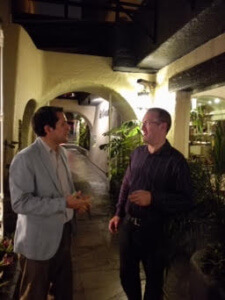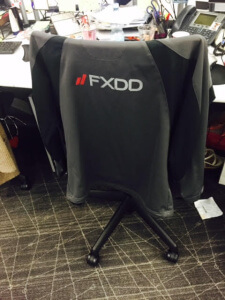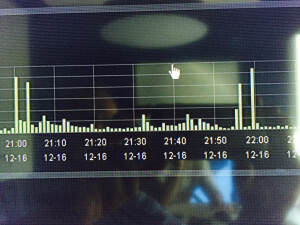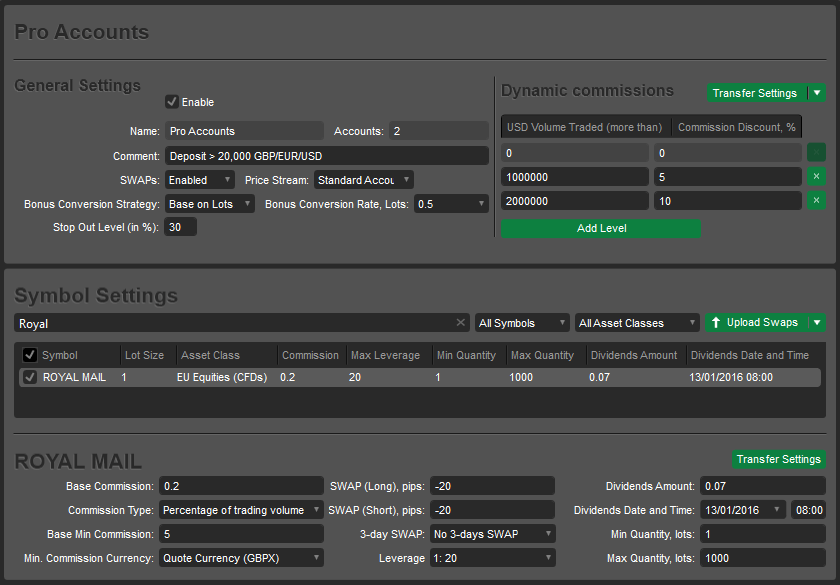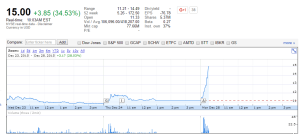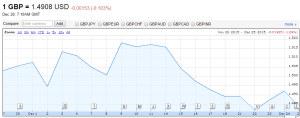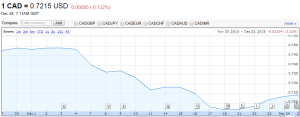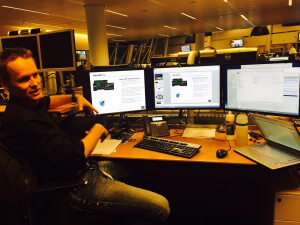December 23, 2015, 4:55 pm UTC.
Managed account boiler room in big trouble with NFA for high pressure tactics, cursing at an 11 year old boy, untold customer account losses and fraudulent activity
The United States is well known for its well-honed consumer protection laws, and the American public can certainly be proud that they reside in a nation with a very high level of business ethics.
The occasional chancer still attempts to circumvent the rules, however, and in the case of Portfolio Managers Inc, a company operated by Amanda Murphy, Christopher Hogan, Thomas Henegan and Andrew Zhukov which provides managed portfolio services to retail customers.
The National Futures Association (NFA) has issued a complaint, dated December 21, 2015, which charges Portfolio Managers Inc along with Mssrs. Heneghan and Zhukov with making deceptive and misleading sales solicitations and using high-pressure sales tactics.
The complaint also charged Mr Hogan with providing materially false and misleading information to NFA. Finally, the Complaint charged Portfolio Managers Inc, and Mssrs Murphy and Hogan with failing to diligently supervise PMI’s operations and associated persons (APs).
Portfolio Managers Inc has, according to the NFA, been an independent introducing broker (IB) and NFA member with a main office in Streamwood, lllinois and branch offices in Charleston, West Virginia; Fort Collins, Colorado; Riddle, Oregon; Los Angeles, California; Friend, Nebraska and Victoria, Australia.
The complaint came about following the commencement of an NFA examination of Portfolio Managers Inc’s main office in November 2014 as a result of the NFA’s risk management group identifying two high-risk factors for the firm.
First, the company only had one AP and listed principal, Mr. Murphy, who was responsible for supervising six separate branch offices scattered across the U.S. and one in Australia. Second, Mr. Hogan, who, as previously alleged, was the branch manager of the firm’s LA branch office, had worked as an AP for Statewide FX, a firm which the NFA had previously barred from NFA membership for sales practice violations.
Mr. Heneghan, who, as previously alleged, was an AP at the LA branch, had also worked at several firms which were the subject of prior disciplinary actions brought by this Committee for sales practice fraud. Like Mr Hogan, Mr Heneghan had also worked at Statewide FX. Prior to that, Heneghan had worked at a number of different firms, including Siegel Trading Co., another firm which was permanently barred from NFA for sales practice fraud.
Additionally, Mr Heneghan worked at Jack Carl Associates, lnc. and Trading Centers of America, lnc., two other firms which were the subject of disciplinary Complaints by the NFA.
In the course of its exam of Portfolio Managers Inc, the NFA reviewed customer activity statements and tax forms for the various branch offices. NFA’s review revealed that between October 2012 and August 2015 all but two of the LA branch office’s 68 customers lost money, totaling about $1.2 million, and paid over $660,000 in commissions.
Additionally, many of these accounts had commission to equity ratios equal to or exceeding 20% and traded both outright long options and option spreads, which may be indicative of abusive trading practices.
Based on these circumstances, the NFA decided to review the sales practices of the LA branch, which included conducting customer interviews and visiting the branch. Through this review, and as alleged in detail below, NFA determined that the LA branch routinely used high-pressure sales tactics and made materially misleading and deceptive statements during sales solicitations to customers.
Massive commissions + lies about potential returns = massive customer losses
Mr. Murphy received 25%of commissions generated by the LA branch and the remaining 75% was split between Mr. Hogan, the LA branch manager, and the APs for the accounts which generated the commissions. From October 2012 through August 2015, the LA branch generated $661,000 in gross commissions of which Mr. Murphy’s share was approximately $170,000.
In the course of its exam of PMl, NFA also learned that Murphy had received a series of extremely serious customer complaints against Heneghan alleging that he had misappropriated customer funds.
In addition to Mr. Heneghan’s misstatements regarding commissions, he also frequently claimed that he could minimize losses and risk while at the same time promising customers huge profit potential.
Such promises had no basis in fact as 97% of Portfolio Managers Inc’s LA branch customers and 98% of Mr. Heneghan’s customers had net losses and on average lost 94% of their total investment.
Nevertheless, Mr. Heneghan routinely claimed to customers that he could limit losses and often promised to “double or triple” a customer’s investment. For example, Mr. Heneghan told a customer in the name of Mr. Harley that if he invested $100,000, he could generate $50,000 a month in profits.
Though Mr. Harley did have some profitable trades, he ultimately closed his account with a net loss of about $102,000. Mr. Heneghan also greatly exaggerated profit potential to a customer named Mr. Miggins telling Mr. Miggins that he could “double [Miggins’] money in less than a month.”
Contrary to Mr. Heneghan’s rosy projections, Mr. Miggins lost nearly his entire $5,180 investment.
Similaily, Heneghan told customer Paul Lucyk that “if he started with the company, he would be very happy and … make a lot of money…”
Mr. Heneghan also told Mr. Lucyk that he could make $20,000 on a $2,600 investment. However, like Mr. Heneghan’s other customers, Mr. Lucyk closed his account with almost a 100% net loss.
Also. Mr Heneghan told a customer in the name of Mr. Mahan that he could expect to make two to three times his investment and could make $20,000-$25,000 in profits on an $8,000-$9,000 investment.
As things turned out, however, Mr. Mahan lost nearly all of his investment. Mr. Heneghan told a customer called Mr. Boyd that he could triple Mr Boyd’s investment and boasted that he typically made money for about 600/o-70o/o of his customers.
These statements by Heneghan were highly misleading. Mr. Boyd came no where near to tripling his investment and, instead, lost almost all of it. Moreover, only one of Mr. Heneghan’s 46 customers had a net trading gain, which is a far cry from the 60%-70% that Heneghan claimed.
Not only did Mr. Heneghan make outsized profit projections with no basis in fact, buthe also significantly downplayed risk and promised customers that he would limit their losses. For example, Heneghan told Mahan that he would use stops to minimize his losses, and at most, Mr. Mahan could expect to lose only 30%-50%.
Boasting to customers about ability to recoup initial losses results in…. yes, you guessed it, more losses
Mr. Heneghan also claimed that if Mahan experienced a loss, he would be able to recoup Mr. Mahan’s loss if Mr. Mahan invested additional money. This did not happen, however. After initially investing and losing $4,800, Mahan made two subsequent deposits of $3,800 and $595. Yet, Mr. Heneghan failed to recoup any of Mr. Mahan’s trading losses.
Mr. Heneghan made similar promises to Mr. Boyd telling him that while he might lose some money, he would never lose it all. Mr. Heneghan also told Mr. Boyd that his investment was a low-risk investment and that Heneghan would always keep his eye on Boyd’s investment to ensure that Boyd got out of the trades before he experienced big losses. However, similar to Mr Mahan, Mr Boyd’s losses were not limited and he eventually lost $6,482 of his $6,500 investment.
Mr. Heneghan also told customer Mr Lucyk that he would not lose his entire investment because Mr Heneghan would “pull out and recover or limit what was lost.” However, Mr. Heneghan failed to fulfill his promise to limit Lucyk’s losses with the result that Lucyk lost $5,344 of his $5,400 investment.
Mr. Zhukov made similar claims that downplayed or minimized risk when he solicited customer Darryl Reynolds (Reynolds). Mr. Zhukov told Reynolds that while there is “always some risk, this was a good thing and it will come out well.”
In fact, things did not come out well for Reynolds as he lost $267 ,825 of his $269,000 investment – a 99% net loss. Mr. Heneghan’s and Mr. Zhukov’s above solicitations were misleading and deceptive in that they exaggerated profit potential and/or downplayed the risk of loss.
Boiler room sales tactics and constant calls to customers several times a day for deposits
Mssrs. Heneghan and Zhukov also used high-pressure sales tactics in an effort to persuade customers to invest with the company or make additional investments, including calling customers multiple times a day and swearing at customers if they expressed hesitation about investing.
For example, Mr. Heneghan called Mr. Lucyk every day for an entire month constantly pressuring him to invest. Although MR. Lucyk repeatedly told Mr. Heneghan that he was not interested in investing with Portfolio Managers Inc, Mr. Heneghan kept calling him. Eventually, Mr. Lucyk gave in and agreed to invest. After Mr. Lucyk’s account lost money, Mr. Heneghan again started calling Mr. Lucyk, repeatedly, pressuring him to invest additional money.
Sales call included swearing at an 11 year old boy
Mr. Lucyk was reluctant to invest additional money, and stopped answering the phone when Heneghan would call. One day Mr. Lucyk’s eleven year old son picked up the phone, and Mr. Heneghan swore at the boy in an apparent attempt to get Mr. Lucyk to either pick up the phone or call him back. Mr. Lucyk eventually relented to Heneghan’s demands that he invest additional money. However, Mr. Lucyk also lost this money.
All told, Mr. Lucyk sustained nearly a 100% net loss in his account. Not only did Mr. Heneghan swear at Lucyk’s son, he also became extremely angry at customer Wilfred De Sola (De Sola) when De Sola questioned his trading strategy. De Sola indicated to Heneghan that he was only comfortable with one or two lot positions. Despite this, Mr. Heneghan continuously pressured De Sola to buy more contracts.
Eventually, De Sola relented to Heneghan’s constant pressuring, and agreed to let Heneghan add positions to his account’ As a result, De Sola went from trading only one or two lots to trading three, five and seven lots. Overall, De Sola invested $8,000 and sustained a net loss of $6,461.
Customer plowed the fields whilst IB plowed his account
Mr. Heneghan also used high-pressure sales tactics in an effort to convince customer Mr Parson to invest. Mr Heneghan knew that Mr Parson is a farmer and often works in the field without access to a computer. Yet Heneghan would frequently call Mr Parson while Mr Parson was in the field and tell him that the market was moving and he needed to strike at the “right time to get a good price.”
Mr. Heneghan also urged Parson to “double down” and authorize additional trades which, Mr Heneghan claimed, would increase Parson’s profits if he bought “at the right price.”
The Irish connection. To be sure, to be sure….. Are you sure??
In addition, it appears that Heneghan may have lied to customer Mr Miggins to induce him to open an account with the company. When Mr Miggins was initially solicited by Mr Heneghan, the topic of Irish ancestry and Notre Dame came up and Mr Miggins mentioned to Heneghan that his brother had attended Notre Dame.
Mr. Heneghan told Miggins that he also attended Notre Dame at the same time as Mr Miggins’ brother. However, according to NFA’s records, MR Heneghan attended college at Chicago State University and never attended Notre Dame. Miggins opened an account at Portfolio Managers Inc based in part on his belief that Heneghan had attended Notre Dame.
Like Heneghan, Mr Zhukov also used high-pressure sales tactics in his dealings with customer Mr Reynolds. Mr Zhukov called Reynolds repeatedly, often multiple times a day. Mr Zhukov would even call Mr Reynolds when he was traveling to work.
According to Reynolds, Mr Zhukov “pressured, pushed and hammered” him to buy more positions claiming that he would realize a good return if he did. Eventually, Mr Reynolds called the LA branch manager, Mr Hogan, to complain about Mr Zhukov’s high-pressure methods. NFA asked Hogan if he had a record of Reynolds’ complaint and Hogan said he did not as he did not consider it a complaint.
As evidenced by the foregoing allegations, Mssrs Heneghan and Zhukov repeatedly used high-pressure sales tactics to induce customers to invest with Portfolio Managers Inc, deposit additional funds or increase positions on an existing trade.
As the investigation continues, it is very likely that the NFA will come down very hard on these individuals and the company itself in its continual quest to ensure that America retains its reputation for ethics and highly sophisticated commercial conduct.



